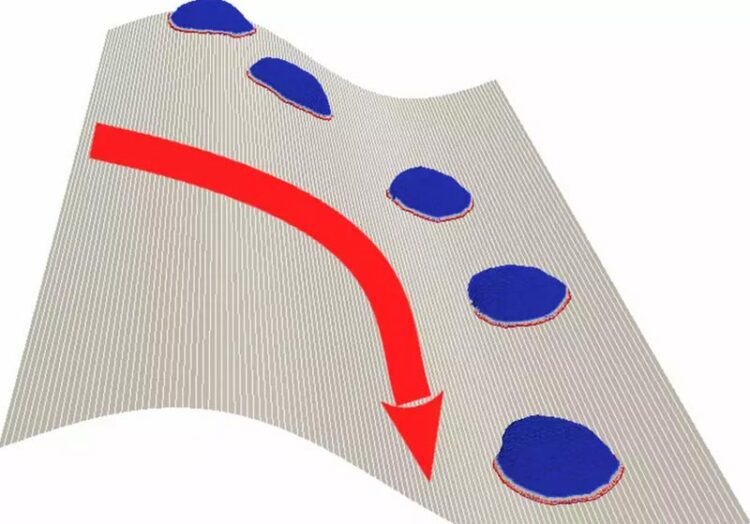How cells are ahead of the curve

The curvature of the surface determines the migration pattern of cells. This phenomenon called curvotaxis gave rise to a universal model for biological systems.
© Weizmann Institute of Science
The curvature of a surface determines the migration behavior of biological cells. They preferentially move along valleys or grooves while avoiding ridges. These findings with contribution from the Max Planck Institute for Dynamics and Self-Organization (MPI-DS) and the Weizmann Institute of Science gave rise to a model predicting cellular behavior. Such universal principles now allow a better understanding of the migration of immune and cancer cells, paving the way for new treatment options.
Cell migration within the body is a fundamental biological phenomenon. Immune cells constantly scout for pathogens and cancer cells migrate through the body causing metastasis. Inside the body, many surfaces such as tissues, blood vessels, or protrusions have a curved shape. “We were able to demonstrate that these curvatures directly affect the movement pattern of cells,” explains Eberhard Bodenschatz, director at the MPI-DS. The scientists could show experimentally that cells prefer certain curvatures over others, a phenomenon called “curvotaxis”.
To unravel this mechanism, they created a computer model of a vesicle containing active cytoskeletal components used for movement. This structure resembles a biological cell, migrating in the body. “Using this minimal cell model, we systematically explored the curvotaxis mechanism on various curved surfaces,” reports Nir Gov from the Weizmann Institute of Science, Israel. “The model cell shows specific migration patterns, for example where cells move along grooves of a wave-like shape, while avoiding motion along the ridges,” he continues.
This observation gave rise to a new model predicting cell behavior. The predictions of the model were then verified experimentally using several cell types. The scientists thus revealed a universal mechanism for cell motility that applies to many different types of migrating cells. On a convex or tubular structure such as the outside surface of a blood vessel, cells tend to move circumferentially around the shape. In contrast, axial forward or backward movement is preferred on concave structures (such as inside a blood vessel). “Our work highlights how physical principles shape universal behavior, even within the complex world of biology,” concludes Eberhard Bodenschatz.
Originalpublikation:
https://www.pnas.org/doi/10.1073/pnas.2306818121
Weitere Informationen:
Media Contact
All latest news from the category: Life Sciences and Chemistry
Articles and reports from the Life Sciences and chemistry area deal with applied and basic research into modern biology, chemistry and human medicine.
Valuable information can be found on a range of life sciences fields including bacteriology, biochemistry, bionics, bioinformatics, biophysics, biotechnology, genetics, geobotany, human biology, marine biology, microbiology, molecular biology, cellular biology, zoology, bioinorganic chemistry, microchemistry and environmental chemistry.
Newest articles

Looking inside battery cells
The power of combining different views. Lithium-Ion batteries presently are the ubiquitous source of electrical energy in mobile devices, and the key technology for e-mobility and energy storage. Massive interdisciplinary…

New snail-inspired robot can climb walls
A robot, designed to mimic the motion of a snail, has been developed by researchers at the University of Bristol. Adding to the increasing innovative new ways robots can navigate,…

New technique improves finishing time for 3D printed machine parts
North Carolina State University researchers have demonstrated a technique that allows people who manufacture metal machine parts with 3D printing technologies to conduct automated quality control of manufactured parts during…





















